12 Protests that Changed the World for Workers Everywhere
Updated: Apr. 05, 2019
You may think of May Day as a time to welcome in spring, but the day represents so much more to workers around the world.
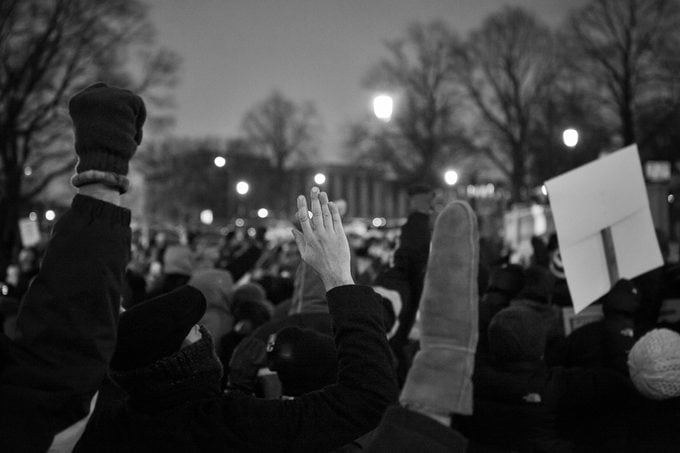
If you went to school in the United States, you likely celebrated the first of May, or May Day, as the beginning of spring, perhaps wearing flower crowns and dancing around a beribboned “May pole.” But this day in history is about so much more than a mere change of seasons—because it’s also known as International Workers’ Day, and in many countries prompts a celebration of workers and an opportunity to protest for better work conditions. This year the day has become increasingly high profile, with protests of all kinds scheduled throughout the world on May 1, 2019.
“Workers’ demonstrations, strikes, and even rebellions, starting at least in the late eighteenth century, have shaped many of our modern views of labor, and the rights associated with it,” says James Daughton, PhD, an associate professor of history at Stanford University. “Labor protests are also important because they are directly tied to new ideas about political rights. When unemployed workers, for example, demonstrated in Paris in 1848, they were staking a claim to be part of broader conversations about liberty, equality, and universal suffrage.”
It’s a topic that’s not resigned to history books; labor protests are happening now, as we speak. “In more modern times, the Occupy Wall Street movement did not necessarily change the nature of labor in the United States, but it did bring new terminology and, most importantly, ideas about the privilege of the ‘one percent,’ into public discourse,” Dr. Daughton adds.
This May Day let’s recall some of the most important labor protests that changed the course of history.
The Haymarket Affair
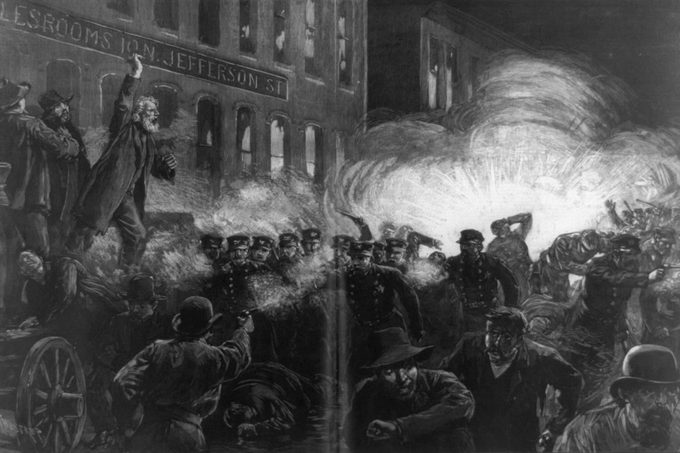
To understand why International Workers’ Day is May 1, we have to look back to the Haymarket Affair. On May 1, 1886, thousands of workers across the United States went on strike to protest poor working conditions and to demand an 8-hour maximum workday. The situation became heated; by May 4, crowds in Chicago’s Haymarket Square had gathered for a major union protest. Police were called in to keep the peace and it was working, somewhat, until someone—history does not reveal the name of the person—threw a bomb into a huddle of police, killing seven and wounding 67. Police retaliated, killing between four and 50 people and wounding 200 more. The bloody event strengthened the position of the unions, and sparked the beginning of modern labor demonstrations. May Day came into prominence as a holiday. Despite Chicago’s big role as a backdrop to this historical moment, these are actually the cities history buffs most like to visit.
The Bloody Sunday Massacre
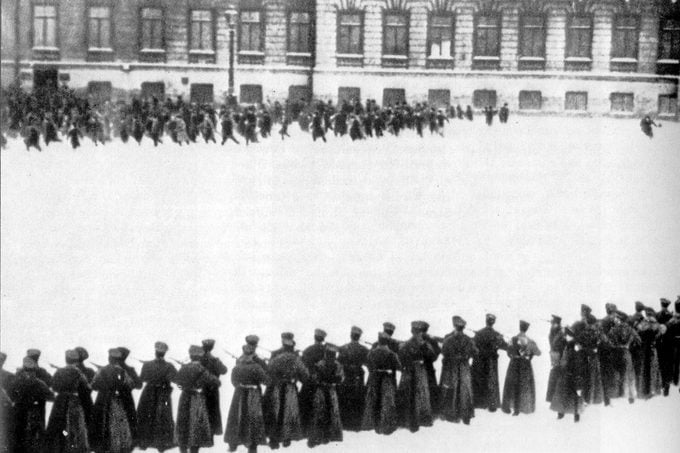
Early 20th century Russia looked much like medieval Europe, with a small class of rulers living in extreme luxury controlling masses of peasants living in extreme poverty. No longer content to eat or starve at the whims of the nobles, the people started to organize into labor groups. On January 22, 1905, a group of workers marched to the winter palace of Czar Nicolas II to petition their grievances. Imperial forces opened fire on the unarmed protesters; in the ensuing panic, more than 1,000 protestors were killed or wounded. Outrage over the Bloody Sunday Massacre sparked the first Russian revolution of 1905, and that quickly lead into the second Russian revolution that overthrew the monarchy and established a new form of government that (purported) to put workers’ rights at the forefront. This labor protest altered not just the course of Russian history, as it moved into its communist era, but the politics of the world at large, paving the way for both World Wars.
The Battle of Blair Mountain
Despite being the largest armed uprising in America since the Civil War, the Battle of Blair Mountain is not well remembered to any but the staunchest of history buffs, yet the series of conflicts between miners and coal operators that spanned nearly a decade marked an important battle for constitutional rights. In August 1921, more than 10,000 armed coal miners marched to Mingo County, West Virginia, to protest the Mine Guard System—where coal companies, backed by privately owned armed guards ruled mining operations like a police state, and rights to assembly, free speech, and other basic rights were signed away as a condition of employment and unions were banned. The miners were confronted by local troops and the battle, which included bombs and machine guns, raged for four days before being stopped by federal troops. Remembered as “Labor’s Gettysburg,” the clash earned the protestors basic rights that would become significant to all workers in the United States.
The General Motors Sit-Down Strike
In sheer numbers, the General Motors Sit-Down Strike of December 1936 wasn’t a huge protest. However, the effects have been far-reaching and the event is often credited with fostering the modern labor movement. On December 30 of that year, auto workers began a sit-in at the GM Fisher Body Plant Number One in Flint, Michigan, that would last 44 days. The workers were fighting for the recognition of their union, higher wages, better safety procedures, and—incredibly—permission to speak in the lunchroom. Eventually, the company compromised, which led to the auto workers’ union becoming a major political force in the United States and the outcome had global repercussions. The sit-in nature of the protest had been inspired by similar European protests and in turn inspired workers in other countries to do a “sit-down strike.”
The Delano Grape Strike
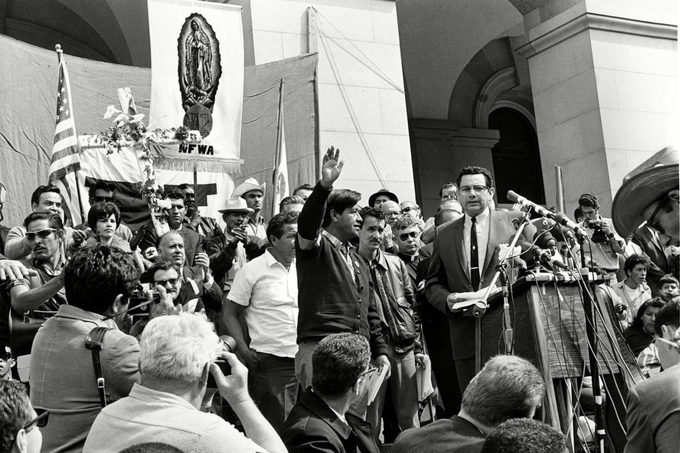
In the 1950s, CesarChavez rose to prominence as a civil rights activist in California; by 1962, he had made workers’ rights his raison d’etre. On September 8, 1965, when a group of Filipino farm workers went on strike against grape growers in Delano, CA, protesting years of poor pay and terrible working conditions, Chavez’s group joined in, creating the United Farm Workers union, and expanding the boycott across the country. The grape growers relented in 1970, granting workers better pay, benefits, and protections. Chavez’s tactics of nonviolent protest—using strikes, boycotts, marches, and fasts—caught on, inspiring labor protests around the world.
The 1968 Protests
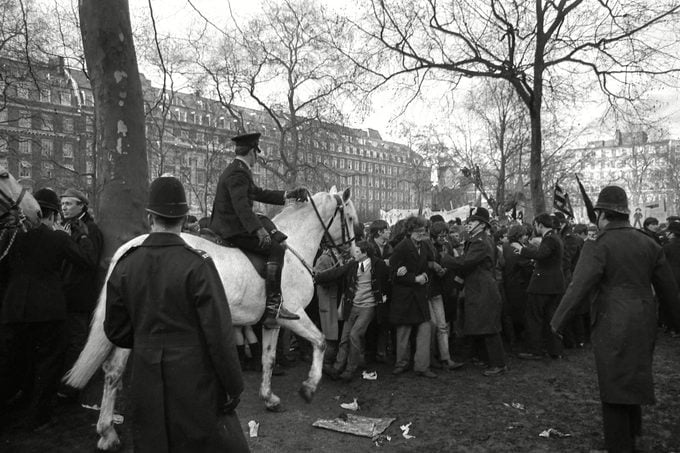
In the years following World War II, a booming economy had lifted the quality of life for some workers but left many others behind. By 1968, global inequalities had reached a breaking point, and people worldwide—mainly low-wage workers, students, and the poor—took to the streets to protest all aspects of social inequality, from working conditions and wages to political issues, the environment, and nuclear armament. The protests of 1968 are recognized as a driving force behind the rise of the civil rights movement led by Martin Luther King, Jr. 1968 was also the year of Dr. King’s assassination. Don’t miss these rarely seen photos and most memorable quotes of Dr. King.
The Hall of Shame Awards Protest
Labor protests in a particular country are generally organized by citizens of that country, but who stands up for the rights of the millions of foreign domestic workers who, without legal status as citizens, are particularly vulnerable to abuse? On December 15, 2005, foreign domestic workers participated in the Hall of Shame Awards Protest. Protestors in Hong Kong boarded buses and trains and made the rounds to various countries’ consulates, where they handed out “awards” to country leader’s for the most outrageous human rights abuses and crimes against workers. Corporations whose business activities are characterized by “human rights violations, environmental destruction, immoral tax practices or corruption” were also recognized with “Public Eye” awards.
The Arab Spring
The Arab Spring began as a worker protest—and sparked the uprising of dozens of Arab-majority states in North Africa and the Middle East. In 2010 Mohamed Bouazizi, a Tunisian fruit seller, set himself on fire as an act of protest when police threatened to shut down his small business because he didn’t have the proper paperwork. He quickly became a symbol of oppressed workers not just in Tunisia but in the entire area and throughout the Middle East. The impacts of the protest have had global consequences still being felt today. Mohamed Bouazizi is one of the 9 ordinary people who changed history.
The Fight For $15
The federal minimum wage in the United States is currently $7.25 per hour and hasn’t seen an increase in 10 years, despite employment having made a full recovery from the Great Recession. On November 29, 2012, hundreds of fast food workers walked off their jobs in New York City to protest the low minimum wage, saying it’s not a livable wage. The Fight for $15 kicked off rallies and strikes across the country. On April 15, 2015, tens of thousands of minimum wage workers from a wide range of fields continued the protest and walked off the job—making it the largest protest of low-wage workers in American history. The movement wasn’t contained to just the United States; more than 200 cities around the globe held similar protests demanding a livable minimum wage in their countries, as well. If you’re curious what an average American franchise worker earns, here’s a look at a wages at few of America’s favorite chains: McDonald’s, Starbucks, Trader Joe’s, Costco, Target.
The Heilongjiang LongMay Mine Riots
In 2016, the Chinese government implemented many economic reforms, one of which was to curtail the use of coal mines in the country. The Heilongjiang LongMay Mine announced plans to lay off 100,000 workers. More than 10,000 workers rioted, protesting that they hadn’t been paid in six months and were held in dangerous working conditions. (The mine had been the site of a terrible explosion in 2009 that killed more than 100 people.) Due to the sheer scale of the Heilongjiang LongMay Mine Riot, it stands out as one of the largest labor protests in the world. Later that year, the government established a $15 billion assistance fund to aid the unpaid workers, but still, more than half a million Chinese coal miners remain displaced and out of work.
The 2017 May Day Protest
Labor protests continue in America—consider the 2017 May Day Protests. Thousands of people turned out in cities across the country, including Chicago, Detroit, Las Vegas, Los Angeles, Miami, New York City, Philadelphia, San Francisco, Seattle, and Washington, DC, to protest President Donald Trump’s policies on immigration and workers’ rights. International labor protests occurred the same day in Havana, Istanbul, Moscow, St. Petersburg, Paris, the Philippines, Kosovo, and Tbilisi, Georgia, making it a global affair. The protests were repeated on May Day 2018 and are planned for 2019.
The Yellow Vests Movement
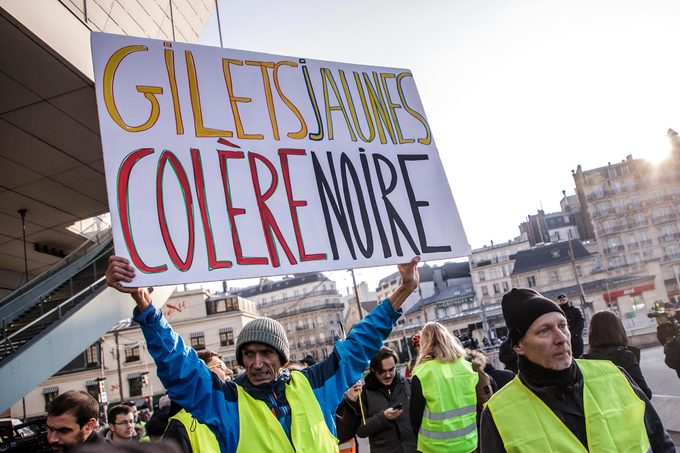
Erupting in November 2018, the Yellow Vests Movement protest is ongoing. It began when French workers objected to a proposed rise in diesel fuel prices, however, the protests quickly became about much more than that. Protesters claim their government’s “tax reforms” benefit only the wealthy, at the expense of the poor. French workers donned bright yellow emergency vests as a visual way to show solidarity. Some of the protests have led to violent riots, vandalism, and looting and demonstrators have been met with tear gas; in some cases, the government has deployed the military. How it will end is uncertain but the movement has changed the conversation about worker’s rights, not just in France but all over the world. Yellow vests have became a potent symbol, adopted in protests worldwide, including Australia, Iraq, and Israel.

















